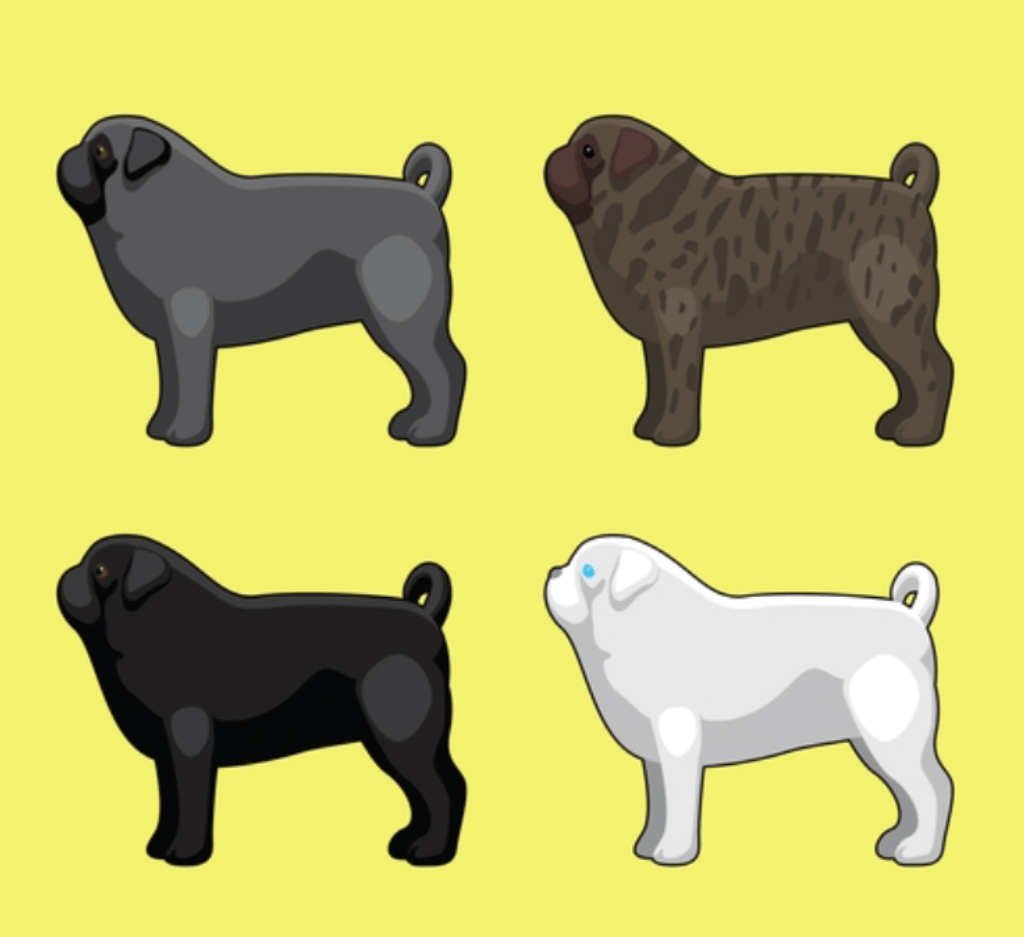American Kennel Club Breed Standard
The American Kennel Club (AKC) only recognizes black and fawn Pugs for show. If you have a silver or gray Pug, you’re in for automatic disqualification.
However, you can register your silver and apricot Pug as fawn. This makes them eligible to compete as these colors are quite similar to fawn.
All this means that pugs that aren’t black or fawn aren’t allowed to compete in official AKC show rings. This doesn’t necessarily mean that other pug colors do not exist.
Fédération Cynologique Internationale Breed Standard
The World Canine Organization recognizes the following pug colors:
That’s two more than what the AKC recognizes. So, you can easily register your Pug and enroll him in dog shows.
The Kennel Club, UK Breed Standard
Just as the FCI, the Kennel Club of the United Kingdom also recognizes the following colors:
These are the Pug colors that this kennel club allows. Pugs of other colors will be automatically disqualified.
Canadian Kennel Club Breed Standard
The Canadian Kennel Club recognizes only three pug colors which include:
- Black
- Silver fawn
- Apricot fawn
To qualify for competing, the fawn dogs must have black ears and masks.


Pingback: Kooky Pugs | The Comprehensive Pug Breed Information Guide